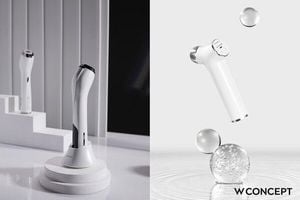The impact of small-incision lenticule extraction (SMILE) surgery continues to be explored, particularly concerning its effect on peripheral refraction and aberrations among individuals with myopia. A recent study conducted at Tianjin Eye Hospital has revealed important findings about the changes these patients experience post-surgery.
This investigation focused on 28 patients suffering from myopia and myopic astigmatism. It was aimed at assessing how peripheral optical quality is altered following the minimally invasive SMILE surgery. Using state-of-the-art technology, researchers employed a modified Shack-Hartmann wavefront sensor to obtain precise measures of peripheral refraction and aberrations before and six months post-operatively.
Before undergoing surgery, the patients exhibited nearly symmetrical distributions of relative hyperopia within the horizontal plane, contrasting with hyperopic shifts observed upward after the procedure. Post-surgery, significant changes were detected, including increased spherical aberration from 0.12 ± 0.11 μm to 0.24 ± 0.14 μm (t = 20.047, P = 0.000), alongside notable increases in horizontal coma.
One of the most important outcomes of the study was related to patient satisfaction. The research revealed, "The majority of patients were satisfied with the postoperative daytime vision; there was no significant deterioration in nighttime visual symptoms compared to preoperative levels." Remarkably, even though 35.7% of patients reported poor night vision after the operation, this was still seen as compatible with the overall satisfaction with their vision improvement.
Overall, this study indicates SMILE surgery reduces peripheral refraction but leads to increased asymmetry along the vertical axis. It also highlighted the notion of patient perceptions post-surgery, emphasizing the need to increase awareness around visual symptoms associated with aberrations.
Past research has indicated the importance of peripheral vision quality for day-to-day activities, particularly for those who may need to navigate or drive at night, where issues such as glare and halos can severely impact visual performance.
Indeed, as patients experience changes following vision correction surgeries, the need for thorough assessments—including both subjective and objective measures—becomes clear. Researchers noted, "Changes in refraction and higher-order aberrations after surgery are not only limited to the central visual field but also extend to the peripheral visual field." This warrants more extensive consideration during preoperative planning and postoperative follow-ups.
While the findings seem clear-cut, the study also acknowledges some limitations, such as the small sample size and short follow-up period. Future research directions should prioritize these factors to develop comprehensive outcomes to improve surgical techniques and patient satisfaction. Further evaluation may also help differentiate the precise causes of night vision complications following these procedures.
Overall, this study contributes significantly to our comprehension of peripheral refraction and aberrations after SMILE surgery, underscoring the surgery's potential to modify visual quality substantially. It serves as both inspiration for future research and as encouragement for patients weighing their options for correcting myopia through surgical means.



